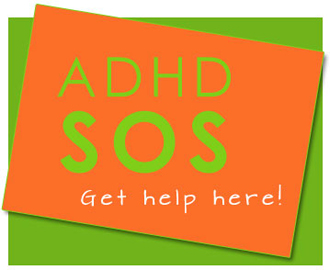A new school year can be an exciting, yet stressful time in your child’s life.
Numerous thoughts cross their minds about the  possibilities that await them, both academically and socially. For parents, there are stressors too, such as adjusting to schedules, additional demands and having your child out of your care. As a family, this is a great opportunity to strengthen your connection as you support each other through this journey. Here are some tips to help you manage the stress:
possibilities that await them, both academically and socially. For parents, there are stressors too, such as adjusting to schedules, additional demands and having your child out of your care. As a family, this is a great opportunity to strengthen your connection as you support each other through this journey. Here are some tips to help you manage the stress:
1. Talk about their school day everyday. Ask questions and really listen. Sometimes, your child may want help brainstorming solutions to a situation and other times they may just want you to listen. During this time give your child your undivided attention. Also remember to share their enthusiasm for all the good things that they experienced.
2. Make sure your child has at least 8-10 hours sleep and all the electronics, including TV are shut off 30 minutes prior to bedtime. Mornings can be easy by creating a morning routine, having them set out their clothes or uniforms, getting backpacks ready and breakfast chosen the night before goes a long way.
3. The best way to immediately tone down your stress level is a few deep breaths. The breath is best inhaled through the nose and exhaled through the mouth. Try this as soon as you feel a stressor.
4. Have your child develop a new mantra “I’ve got this.” This mantra will be useful every time they feel uncertain about something. It is used as a simple reminder that it’s ok, they are going to be fine, they can do it! So, before that test that they studied for- “I’ve got this” – before they go talk to that new someone – “I’ve got this”.
5. Social concerns are high for kids. Remind them that not everyone is going to see eye to eye with them and may not even like them and that’s OK! We are all unique and special and the most important thing is that we like ourselves and are nice and respectful to others. Encourage your child to find a group of friends that they feel comfortable with and remind them that over time they can always choose to develop more friendships.



 If your child suffers from shyness, they are not alone. Recent research suggests that over 50% of the general population currently experiences some degree of shyness in their lives. Many children are shy in situations that are new to them. It can be painful if it continues to adolescence and beyond preventing them from participating fully in most social settings. Being shy is not necessarily a problem, unless it causes distress. Luckily, there are many strategies and options to help overcome shyness.
If your child suffers from shyness, they are not alone. Recent research suggests that over 50% of the general population currently experiences some degree of shyness in their lives. Many children are shy in situations that are new to them. It can be painful if it continues to adolescence and beyond preventing them from participating fully in most social settings. Being shy is not necessarily a problem, unless it causes distress. Luckily, there are many strategies and options to help overcome shyness. Kids need guidance and discipline as they grow into responsible, caring adults. Parenting young teens is not for the faint of heart. It’s hard work. As young teens become more independent your parenting style may change. They need to be given more choices and taught critical thinking skills.
Kids need guidance and discipline as they grow into responsible, caring adults. Parenting young teens is not for the faint of heart. It’s hard work. As young teens become more independent your parenting style may change. They need to be given more choices and taught critical thinking skills. Helping your child manage anger is often one of the hardest—and best—things we can do as parents. The first thing to recognize is that anger is a clear symptom of the presence of deeper emotions such as frustration, disappointment, fear, and pain. If we as parents acknowledge and name these underlying feelings for our children, their anger should start to dissipate.
Helping your child manage anger is often one of the hardest—and best—things we can do as parents. The first thing to recognize is that anger is a clear symptom of the presence of deeper emotions such as frustration, disappointment, fear, and pain. If we as parents acknowledge and name these underlying feelings for our children, their anger should start to dissipate. It used to be that after graduating from college, young adults would set out to create a nest of their own. Today, however, some 30% of young adults move back in with their parents—a higher proportion than any time since the 1950s.
It used to be that after graduating from college, young adults would set out to create a nest of their own. Today, however, some 30% of young adults move back in with their parents—a higher proportion than any time since the 1950s. ADHD affects more than just kids’ waking hours. And in turn, sleep deprivation can make kids’ attention problems worse.
ADHD affects more than just kids’ waking hours. And in turn, sleep deprivation can make kids’ attention problems worse.
 If you’re a parent, you know how frustrating it is when your child interrupts you. Whether you’re on an important phone call, trying to finish up some computer work, or having a face-to-face conversation with another adult, it often seems like you have an eager child competing for your attention. Why do they do this?
If you’re a parent, you know how frustrating it is when your child interrupts you. Whether you’re on an important phone call, trying to finish up some computer work, or having a face-to-face conversation with another adult, it often seems like you have an eager child competing for your attention. Why do they do this?

